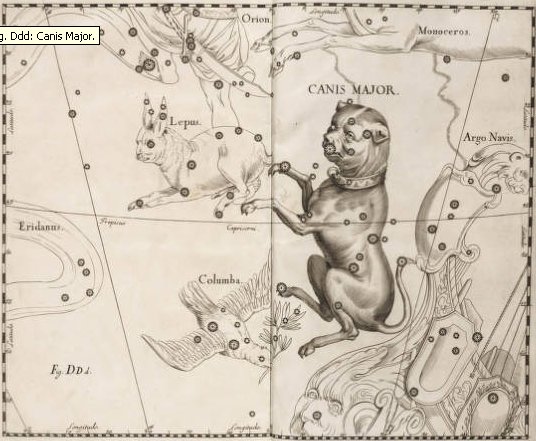Bb9.3 Once again. South of the equator, on Easter Island, the seasons of the Sun were upside down compared to those north of the equator. Just as if illustrated by the orientation of the Orion constellation when rising in the east:
However, this problem could easily be disposed of by changing the reference points of the Sun to those of the Moon by use of the nakshatra system. And therefore the place of Canopus close to the Full Moon would indicate when the Sun was at Christmans Eve: ... It inaugurates the most accurate solar calendar known to the ancient world, with 365¼ days per year. It declares the deceased princess Berenike a goddess and creates a cult for her, with women, men, ceremonies, and special 'bread-cakes'. Lastly it orders the decree to be incised in stone or bronze in both hieroglyphs and Greek, and to be publicly displayed in the temples. The traditional Egyptian calendar had 365 days: twelve months of thirty days each and an additional five epagomenal days. According to the reform, the 5-day 'Opening of the Year' ceremonies would include an additional 6th day every fourth year. The reason given was that the rise of Sothis advances to another day in every 4 years, so that attaching the beginning of the year to the heliacal rising of the star Sirius would keep the calendar synchronized with the seasons. This Ptolemaic calendar reform failed, but was finally officially implemented in Egypt by Augustus in 26/25 BCE, now called the Alexandrian calendar, with a sixth epagomenal day occurring for the first time on 29 August 22 BCE. Julius Caesar had earlier implemented a 365¼ day year in Rome in 45 BCE as part of the Julian calendar ...
And then there were 3 little sisters (→ 111 = APRIL 21) who lived at the bottom of a well, cfr the Mayan 8th month Mol. Which means its water must have subsided:
... 'Tell us a story!' said the March Hare. 'Yes, please do!' pleaded Alice. 'And be quick about it', added the Hatter, 'or you'll be asleep again before it's done.' 'Once upon a time there were three little sisters', the Dormouse began in a great hurry: 'and their names were Elsie [ε, Kaus Australis], Lacie [λ, Kaus Borealis], and Tillie [τ, *289.4]; and they lived at the bottom of a well — ' 'What did they live on?' said Alice, who always took a great interest in questions of eating and drinking. 'They lived on treacle,' said the Dormouse, after thinking a minute or two. 'They couldn't have done that, you know', Alice gently remarked. 'They'd have been ill.' 'So they were', said the Dormouse; 'very ill'. Alice tried a little to fancy herself what such an extraordinary way of living would be like, but it puzzled her too much: so she went on : 'But why did they live at the bottom of a well?'
... When this tremendous task had been accomplished Atea took a third husband, Fa'a-hotu, Make Fruitful. Then occurred a curious event. Whether Atea had wearied of bringing forth offspring we are not told, but certain it is that Atea and her husband Fa'a-hotu exchanged sexes. Then the [male] eyes of Atea glanced down at those of his wife Hotu and they begat Ru. It was this Ru who explored the whole earth and divided it into north, south, east, and west ... ... Men's spirits were thought to dwell in the Milky Way between incarnations. This conception has been handed down as an Orphic and Pythagorean tradition fitting into the frame of the migration of the soul. Macrobius, who has provided the broadest report on the matter, has it that souls ascend by way of Capricorn, and then, in order to be reborn, descend again through the 'Gate of Cancer'. Macrobius talks of signs; the constellations rising at the solstices in his time (and still in ours) were Gemini and Sagittarius: the 'Gate of Cancer' means Gemini ...
|
||||||||||||||||||||||||||||||||||||||||||||||||||||||||||||||||










